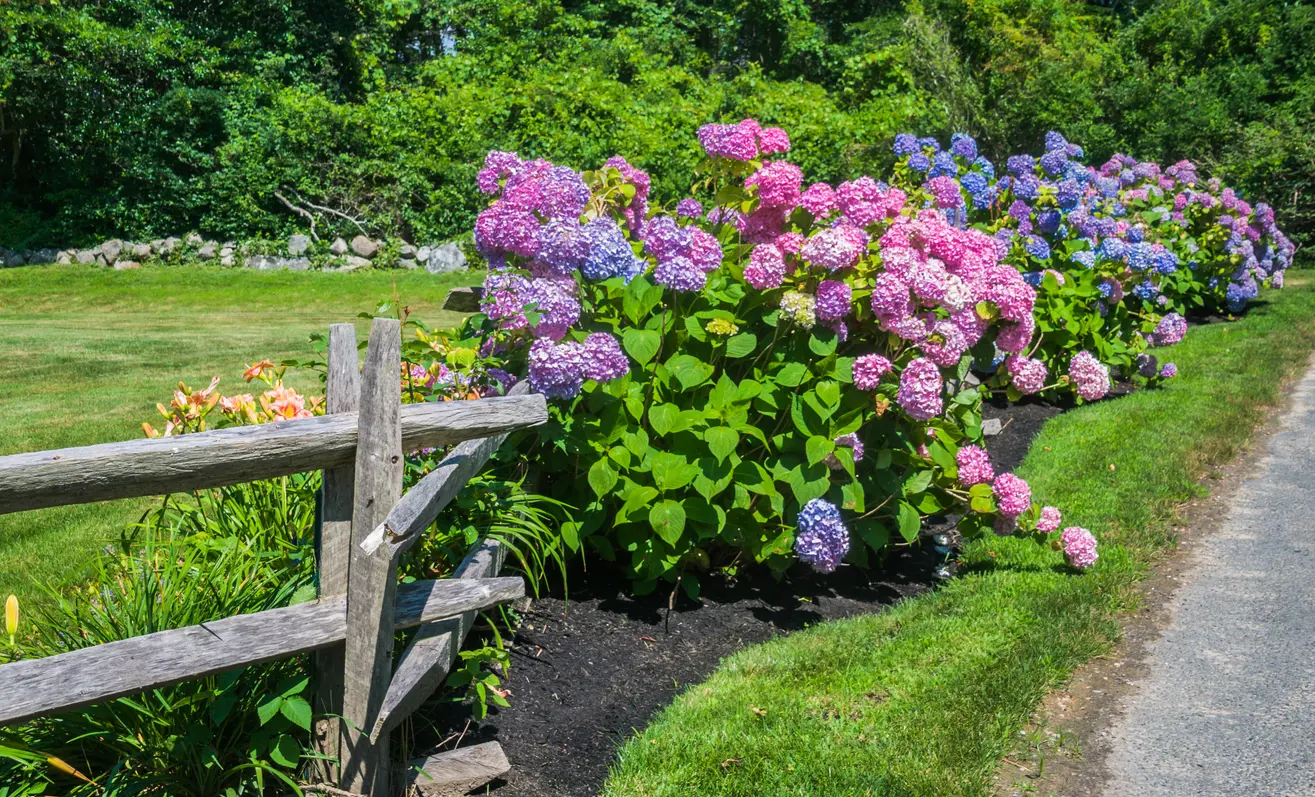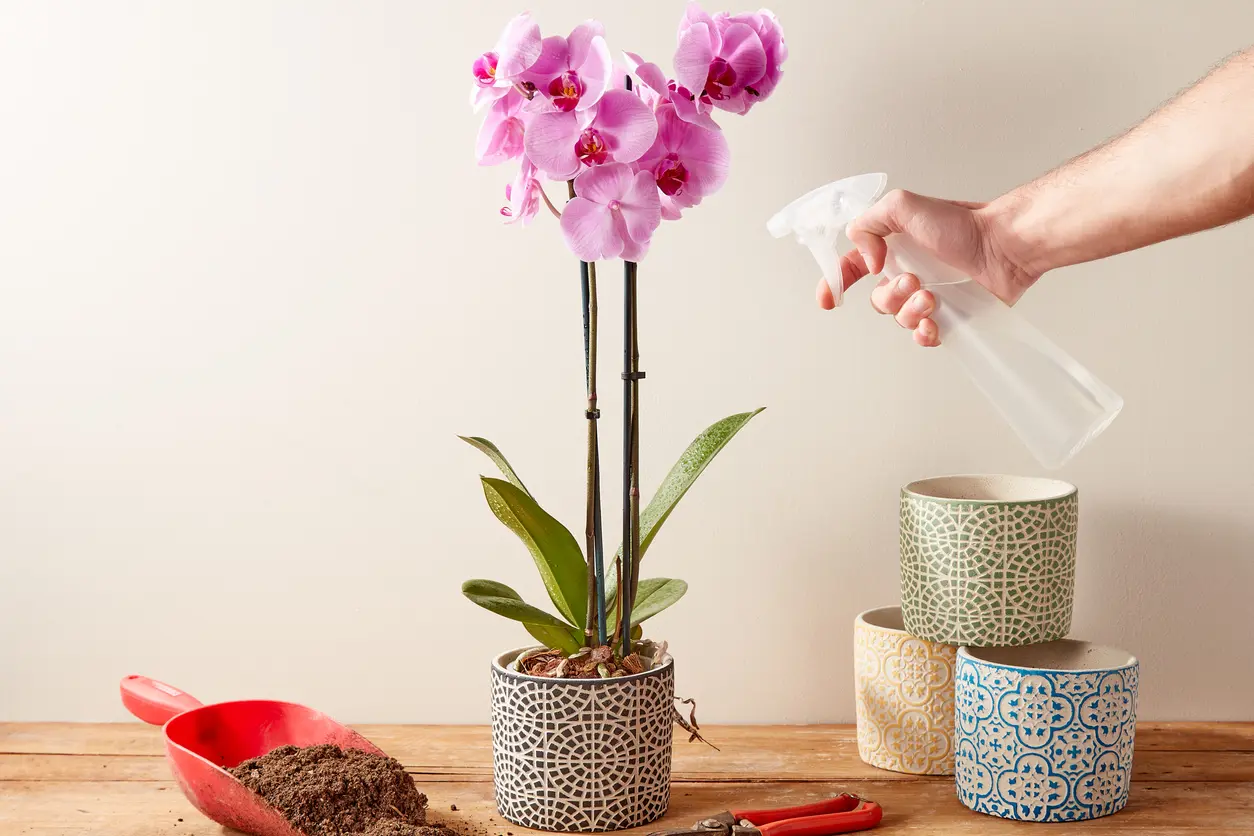
Easy to recognize by their gorgeous, large flower heads, hydrangeas are a showstopper in the home garden. With a deep history in North America, these showy plants are delicate in appearance but manageable even for beginning gardeners.
Part of their popularity is due to their incredible variety. From the classic blue or pink Bigleaf hydrangeas to the white and cream Panicle hydrangeas, these flowers come in a range of shapes and sizes.
Their ability to thrive in multiple climates also makes them the ideal option for gardeners looking to add some color to their space. And with the right hydrangea care tips, you can also start growing these stunning plants.
Wondering how to grow hydrangeas? Read our hydrangea caring and growing guide to learn more.
Best Hydrangea Varieties
Before growing your hydrangeas, you'll first need to pick your variety. There are a few different species of hydrangea, including the Bigleaf or French hydrangea, the Oakleaf Hydrangea, and the Smooth hydrangea. Within each species, you can choose from several varieties to meet your needs.
Bigleaf hydrangeas thrive in warmer areas and come in two distinct flower types: Hortensias, which are flamboyant and showy, and Lacecaps, which are more subtle. Some common Bigleaf varieties include:
- Endless Summer
- Pia
- Blue Wave
The Oakleaf hydrangea is the Alabama state wildflower and is known for its excellent fall color. Types include:
- Snowflake
- PeeWee
- Alice
The Smooth hydrangea is the hardiest species in many situations. Some popular varieties are:
- Annabelle
- Hayes Starburst
- Hills of Snow
The Panicle hydrangea has narrower leaves than other species and requires lots of sunlight. These varieties are also known as “peegees”:
- Grandiflora
- Chantilly Lace
- Brussels Lace
There are also Serrated hydrangeas, a smaller version of the Bigleaf, and climbing hydrangeas to consider for your home garden.
Hydrangea Growing Conditions
Hydrangeas are relatively simple to grow when conditions are right. Soils should be well-drained yet fertile, with plenty of organic matter. Panicle hydrangeas do best in full sun, while other species appreciate at least partial shade, especially during the warmest parts of the day.
When to Plant Hydrangeas
Add hydrangeas to your garden after the last spring frost, but ideally before the hottest parts of the summer. Their active growth generally takes place from March to September, so it’s best to establish them as close to the beginning of this period as possible. You can also plant in the fall, allowing your new plant to establish roots before it's time to bloom.
How to Plant Hydrangeas
Once you’ve decided on your hydrangea’s location and the time is right, you can get to planting. Dig a hole at least 2 feet wider than the root ball on your plant and deep enough so that all roots can be buried. Place the root ball in the hole and replace about half of the soil. Firm it down, and then fill the rest of the hole. Cover the planting area with 2 inches of your choice of mulch when complete.
Watering Hydrangeas
Hydrangeas certainly don’t thrive in wet areas, but they are also not drought-tolerant, as they rely on supplemental water. This is especially true of the Bigleaf and Smooth species that prefer more water than their counterparts. One inch of water per week is recommended in average conditions.
Sandy soils will require more frequent watering and more total water. Ample mulch can help conserve water for a longer period.
Fertilizing Hydrangeas
Different species have varying fertility needs, so consult the plant's source for specific guidelines on its care. Bigleaf varieties like steady applications throughout the growing season, while Smooth types prefer a single application in late winter.
While animal manure is a popular choice for garden fertilizer, it should generally be avoided for hydrangeas, as it's too high in nitrogen to meet their needs. Choose a slow-release fertilizer or one specifically designed for hydrangeas. Regardless of your species, a soil test can help you determine the best way to supplement your hydrangeas. Fertility can also affect hydrangea color!
How to Change Hydrangea Color
When it comes to Bigleaf and Serrated hydrangea varieties, gardeners can have a choice in the color of their plants' blooms. In these species, color is influenced by the plant’s uptake of aluminum from the soil, a process that is determined by the soil's pH, or acidity level.
When soils are acidic, or at a low pH number, aluminum becomes available to the plant’s uptake processes, resulting in blue flowers. At higher pH levels, flowers turn pink. Changing pH is a gradual process, so results shouldn’t be expected instantly.
However, it's a measure that you can undertake to influence flower color. Adding sulfur can lower pH and make the soil more acidic, while adding lime raises pH.
A slightly faster process is to feed the plant with a liquid drench. Dissolve one tablespoon of aluminum sulfate, also known as alum, in a gallon of water, and heavily water around the base of the plant once a month at the start of the growing season to lower the pH and create blue flowers.
Hydrated lime can replace the alum in the teaspoon-to-gallon solution to raise the pH for pink. Be careful using either compound, and don’t splash the leaves or your skin—both can burn!
How to Prune Hydrangeas
Hydrangea maintenance isn’t limited to water and nutrients. Knowing when to prune hydrangeas will keep your plant in optimal condition. Pruning is best done during the dormant period, which typically occurs in late fall, winter, or early spring. The type of pruning cuts you’ll make varies depending on the species of hydrangea. No matter the variety, be sure to remove any dead or diseased wood. You can also prune to create the shape you desire.
Panicle hydrangea:
- Prune stems to just above a healthy bud using clean pruning shears. This is called a “heading cut."
Bigleaf hydrangea:
- Most varieties produce buds for next year’s flowers in the late summer to early fall, so be sure not to prune them before then.
- Use a heading cut as in Panicle hydrangeas.
Smooth hydrangea:
- Don’t prune until the plant has had one to two seasons of growth.
- If you want a shrub, prune down to the ground in the spring.
- If you want a larger plant, pruning is unnecessary.
Climbing hydrangea:
- No pruning is required for this plant unless it's outgrowing its designated area in your garden.
- Remove any dead or diseased wood that develops on the plant.
Oakleaf hydrangea:
- These hydrangeas flower on “old wood”, not wood that is produced within the same growing season.
- Prune just after flowering using heading cuts.
Winter Protection for Hydrangeas
It's important to know whether or not your hydrangea needs protection from the winter weather, or all of your hard work might go down the drain! Check the listed USDA hardiness zone of your chosen variety, and plan accordingly.
To keep your hydrangeas safe during the winter, mulch them heavily, then wrap them in burlap and insulate the space inside with dry leaves, removing only when all danger of frost has passed in the spring. You can also consider winter protection when planting your hydrangea by choosing a sheltered area in your garden to establish it.
Common Hydrangea Pests & Diseases
Hydrangeas are susceptible to pests and diseases, just like any other garden plant. Certain cultivars may be more or less susceptible to certain invaders, so consider this when choosing your variety.
- Bacterial Leaf Spot appears during warm, wet weather in the late spring and early summer, causing reddish-brown and purple leaf spots. Prevent it by limiting overhead watering and increasing plant spacing for air circulation.
- Fungal Leaf Spot, showing up later in the year, causes tan and gray spotting with purple auras around the spots.
- Cottony Camellia Scale are tiny, white, sucking insects that cause molding to leaves. They can be difficult to manage and can take more than a year to eliminate! Regularly inspect your plants, because early intervention is best.
Propagating Hydrangeas
If you love your hydrangeas, you can make more! Hydrangeas are easily propagated from an existing individual. The best time to take cuttings from your hydrangea is in the late spring into summer when stems have begun to harden. Cut in the morning when the weather is cool, preferably on a dry day. Choose a non-flowering stem to cut, about 6 to 8 inches in length, with two or more pairs of leaves. Using clean, sharp pruning shears, cut your stem about 2 inches below a set of leaves.
Once you have your cutting, trim off the bottom leaves. At this point, you can dip your cutting in rooting hormone, available at most garden centers, to give it a boost, but it's not required. Place the cutting in moist potting soil. Expose your cutting to indirect sunlight and keep it consistently moist. It should take about a month to get established, after which time you can transplant it to your garden.
Landscaping With Hydrangeas
Landscaping opportunities with hydrangeas are virtually endless, which is why they are so popular for the home garden! They make great borders, can serve as a central focal point, or mesh perfectly into a woodland landscape.
Some great companion plants to pair with your hydrangea include astilbe, azaleas, begonias, dogwoods, Japanese Maple, and spirea. All of these plants not only look lovely with hydrangeas, but they also enjoy similar growing conditions. Avoid plants like sunflowers, lavender, rosemary, and roses, as they prefer bright sunlight and often drier conditions. Don’t plant your hydrangeas near large, established trees, because they’ll have to compete for nutrients!
Beautiful hydrangeas, although they have their requirements, are a hardy choice for both beginning and experienced gardeners.






